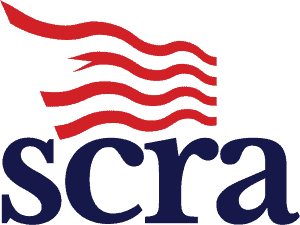What is The Definition of Active Duty?

The United States Department of Defense Manpower Data Center, the informational source used by the Servicemembers Civil Relief Act Centralized Verification Service, reports the following in its user manual as to the definition of active duty as interpreted under the Servicemembers Civil Relief Act:

“Active Duty status, as reported in this file, is defined in accordance with 10 USC §101(d) (1). Prior to 2007, DMDC only received information on active duty service periods of more than 30 consecutive days. In the case of a member of the National Guard, Active Duty includes service under a call to active service authorized by the President or the Secretary of Defense under 32 USC § 502(f) for purposes of responding to a national emergency declared by the President and supported by Federal funds.
All Active Guard Reserve (AGR) members must be assigned against an authorized mobilization position in the unit they support. This includes Navy Training and Administration of the Reserves (TARs), Marine Corps Active Reserve (ARs), and Coast Guard Reserve Program Administrator (RPAs). Active Duty status also applies to a Uniformed Service member who is an active-duty commissioned officer of the U.S. Public Health Service or the National Oceanic and Atmospheric Administration (NOAA Commissioned Corps).
Coverage under the SCRA is broader in some cases and includes some categories of persons on active duty for purposes of the SCRA who would not be reported as on Active Duty in this file. Many times orders are amended to extend the period of active duty, which would extend SCRA protections. Persons seeking to rely on the data in this file should check to make sure the orders on which SCRA protections are based have not been amended to extend the inclusive dates of service. Furthermore, some protections of the SCRA may extend to persons who have received orders to report for active duty or to be inducted, but who have not actually begun active duty or actually reported for induction. The Last Date on Active Duty entry is important because a number of protections of the SCRA extend beyond the last dates of active duty.”
Getting a Military Status Verification
When you have a legal dispute with a customer, whether it’s regarding rent, mortgage, car payment or another type of debt, it’s critical to determine whether someone is on active duty in the United States armed forces before taking any type of court action against them. If a potential defendant is on active duty full time in the military, the Servicemembers Civil Relief Act protects them against certain court actions without a court order. The SCRA provides protections for all branches of the military armed forces: Army, Navy, Air Force, Marines and in some instances the National Guard and those in the Army Reserve as well.
While these protections are helpful to those in full-time active duty military service, they do not exempt them from paying their debts. Thus, as a creditor, you have the right to seek restitution from those in full-time military service, but you must follow the federal law in order to stay in compliance with the SCRA.
Proceeding with a case against a full time active military member without a court order is a violation of the SCRA. Penalties for violating the SCRA include fines, restitution and even jail time.
To find out if the subject of your dispute is full-time active military — or was on active duty on as of a specific date — use the Servicemembers Civil Relief Act Centralized Verification Service.
We provide guaranteed military status verifications, usually within 24 hours. These documents provide proof of your attempt to determine whether the plaintiff is in the Army, Navy, Air Forces, Marines, National Guard or another type of military member. You can use these verifications to quickly move your court case forward. You can even order an affidavit from us to take with you to court.
Without a military status verification from a reliable source, your case may be continued, and lost time is lost money. Rely on SCRACVS.
To order your military status verification, register or log in.

